Training Design Do’s and Don’ts: Gary Winckler
7 CommentsTrain to the athlete’s strengths
Gary Winckler has 38 years of coaching experience behind him. He has taken track athletes to every Olympic Games since the 1984 Olympics.
More impressively, each of those athletes has had a Personal Best or Season Best at the Games. He knows how to prepare for the big event.
I first met Gary 2 years ago when he presented on speed training concepts.
This presentation at GAIN in June 2014 covered the training design concepts that work for him and also how he has evolved his coaching.
Training Do’s
The most important factor is the performance requirement of the athlete. This is different from the performance goal. Once you know that, then it is essential that you look at ways of positively influencing that requirement.
Talk with the athlete about goals/ factor of the process, rather than how fast do you need to run. This means as a coach that you need to clearly understand the performance requirements.
Write them down! Then look at when your top performance needs to be achieved.
Evaluate the strengths/weaknesses of the athlete in light of these performance requirements. Can positive changes in the key performance factors be realistically achieved in the short or long term?
What will be required? Train to the athlete’s strengths as this will provide better and more consistent results.
So far, so good.
Devil is in the detail
James practising hip heists with Gary in the background
Do you understand the skills needed to bring about changes in performance? Can you design exercises that positively impact these skills? What exercises exist that I can use?
What exercises can I develop to most efficiently translate skills into performance?
This is what distinguishes Gary: he works from the top down. (Compare that to the current UK paradigm of learning 2 exercises and then reverse engineering how they improve performance.)
Once you have got this set of exercises look to perform them better today than you did yesterday.
Eliminate conflicting training stimuli: it may result in confused adaptations. For example if you have a speed development theme, then every exercise should lead into that or help develop that.
Understand the long/ short term adaptation to prescribed exercises with respect to Overload, Reversibility and Recovery. Does my exercise presrcription adhere to these principles?
“You can destroy a session by pushing that 1 rep too many“
Evaluate
-

James helping a young hockey player
Constant tweaking of the session and exercises is necessary. “Does the athlete make the bridge between exercise and performance”? If they fail to improve performance, then why are those exercises in place?
- Evaluation is a constant: keep good records and take notes.
- Design training cycles that appropriately balance general and specific exercises. Too much specificity can halt adaptation. Too much general work can detract from performance.
Training Don’ts
Invest too much time in creating annual periodisation plans as they never end up working in reality. Instead look at the overall theme and then plan the microcyle in detail.
Design the training programme without understanding the current goals.
Get caught up in linear models for training volumes and intensities. A consistent application of volume is necessary for building and stabilising performance. An excessive amount of time dedicated to building volume leads to a decrease in performance.
(I find that with UK athletes, volume appears to be the prime directive. They are often given advice like “you must run 4 times a week” or “swim 8 hours a week” with little thought given to what happens within those sessions.)
Manipulating Intensity, Density and Volume
 Gary gave some insights into how he does plan his training. He said that volume in speed/ power programmes has little variation.
Gary gave some insights into how he does plan his training. He said that volume in speed/ power programmes has little variation.
Instead “the volume is dictated by the quality of execution demanded by a performance objective”.
Intensity is the degree of difficulty of the session and is expressed as a % of 100. Quality, however, is a % of perfect. Are you aiming for intensity of quality?
Density is the training frequency of a particular stimulus. This directly affects the training load. In order to enhance technical development, a number of smaller doses that are prescribed more frequently is better.
Complexity is the co -ordinative demand (related to intensity) of an exercise or sequence of exercises.
By manipulating these variables correctly, Gary stated that planned restoration is built into the training plan, rather than having to be put in as an extra. He and Vern Gambetta both expressed an opinion that Overtraining did not occur in Speed/ Power athletes (I have to disagree on this having had personal experience of the effects of huge volumes of intense training under stress).
Gary finished by talking about individualisation of training. This can take many forms by varying: sets, distances run, reps, weights, altering heights of boxes or exercise choices.
Low intensity training is safe for groups. High intensity training must be individual.
Summary
It was a privilege to listen to Gary and get the chance to ask him questions. This quietly spoken coach has bags of experience, knowledge and wisdom. He was happy to share this over the course of the conference in his sessions and in the down periods. Really invaluable insights.
I have taken his advice from 2 years ago and applied it in the speed training I do with our athletes. I have used this training design advice already in preparing athletes for upcoming Championships. I just hope that they benefit as much as Gary’s athletes have.
Further Reading;


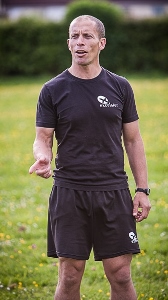 Thanks to everyone who has read and/or contributed/shared this blog this year (including Dan Henderson for above quote).
Thanks to everyone who has read and/or contributed/shared this blog this year (including Dan Henderson for above quote).
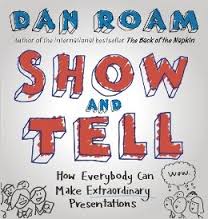 So, I set out this year attempting to read 40 books. I have just finished my 56th. When looking at this list, I realise I need to get a bit more fiction on there for next year. I have just started another Henning Mankell novel to read over Christmas.
So, I set out this year attempting to read 40 books. I have just finished my 56th. When looking at this list, I realise I need to get a bit more fiction on there for next year. I have just started another Henning Mankell novel to read over Christmas. Insideout coaching: Joe Ehrmann. Emotive story about transformational coaching from this ex NFL player.
Insideout coaching: Joe Ehrmann. Emotive story about transformational coaching from this ex NFL player.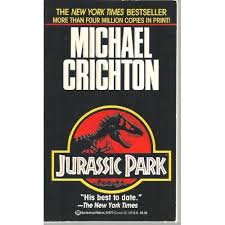 Jurassic Park: Michael Crichton. Classic techno adventure, page turner.
Jurassic Park: Michael Crichton. Classic techno adventure, page turner. In this corner…! Peter Heller. Excellent compliation of 40 interviews with world champion (American) boxers from 1920s -1970s. Mentioned in Tyson’s book, some hard stories in there. Importance of road work and clean living mentioned by all the boxers.
In this corner…! Peter Heller. Excellent compliation of 40 interviews with world champion (American) boxers from 1920s -1970s. Mentioned in Tyson’s book, some hard stories in there. Importance of road work and clean living mentioned by all the boxers. Sport and recreation in ancient Greece: Waldo E. Sweet. Interesting research on the old sports. Aimed at undergraduates with questions, nice insights.
Sport and recreation in ancient Greece: Waldo E. Sweet. Interesting research on the old sports. Aimed at undergraduates with questions, nice insights. Berlin: Antony Beevor. Story of the last days of German collapse in World War II. Savage brutality, futility of it all, utter madness. Tough read, but puts other things into perspective.
Berlin: Antony Beevor. Story of the last days of German collapse in World War II. Savage brutality, futility of it all, utter madness. Tough read, but puts other things into perspective.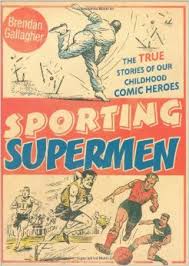 Sporting supermen: Bernard Gallagher. Light relief as Wilson the Wonder, Alf Tupper and Roy of the Rovers are featured in this entertaining comic nostalgia.
Sporting supermen: Bernard Gallagher. Light relief as Wilson the Wonder, Alf Tupper and Roy of the Rovers are featured in this entertaining comic nostalgia.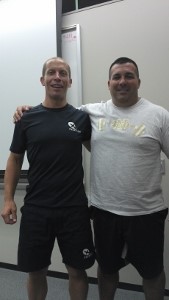
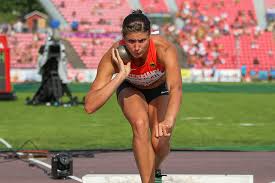 Each training Session begins with CEs. Basically a CE is the movement you perform in the competition itself. In the shot put it would be throwing with the rotational or glide techniques.
Each training Session begins with CEs. Basically a CE is the movement you perform in the competition itself. In the shot put it would be throwing with the rotational or glide techniques. While this category of exercise in general has higher transfer, I underlined particular thrower because each athlete is different. One athlete may have better transfer using heavy implements while another athlete may have better transfer with lighter implements.
While this category of exercise in general has higher transfer, I underlined particular thrower because each athlete is different. One athlete may have better transfer using heavy implements while another athlete may have better transfer with lighter implements. I am looking forward to reading this book after hearing Daniels read part of it on Radio 4′ s “Book of the week”.
I am looking forward to reading this book after hearing Daniels read part of it on Radio 4′ s “Book of the week”.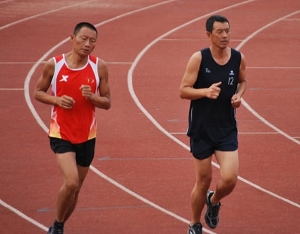

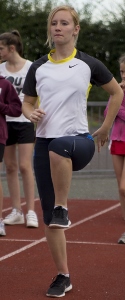 Winter is traditionally used as a time to work on endurance, even for sprinters. However, without working on top speed, what are you learning to endure?
Winter is traditionally used as a time to work on endurance, even for sprinters. However, without working on top speed, what are you learning to endure? This hanging hip drill is an example of specific strength.
This hanging hip drill is an example of specific strength.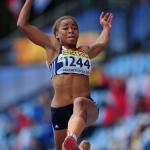 Good luck to Jazmin Sawyers who jumps today in the World Junior Championships. She recently came third in the UK Senior Trials with a jump of 6.64m.
Good luck to Jazmin Sawyers who jumps today in the World Junior Championships. She recently came third in the UK Senior Trials with a jump of 6.64m.